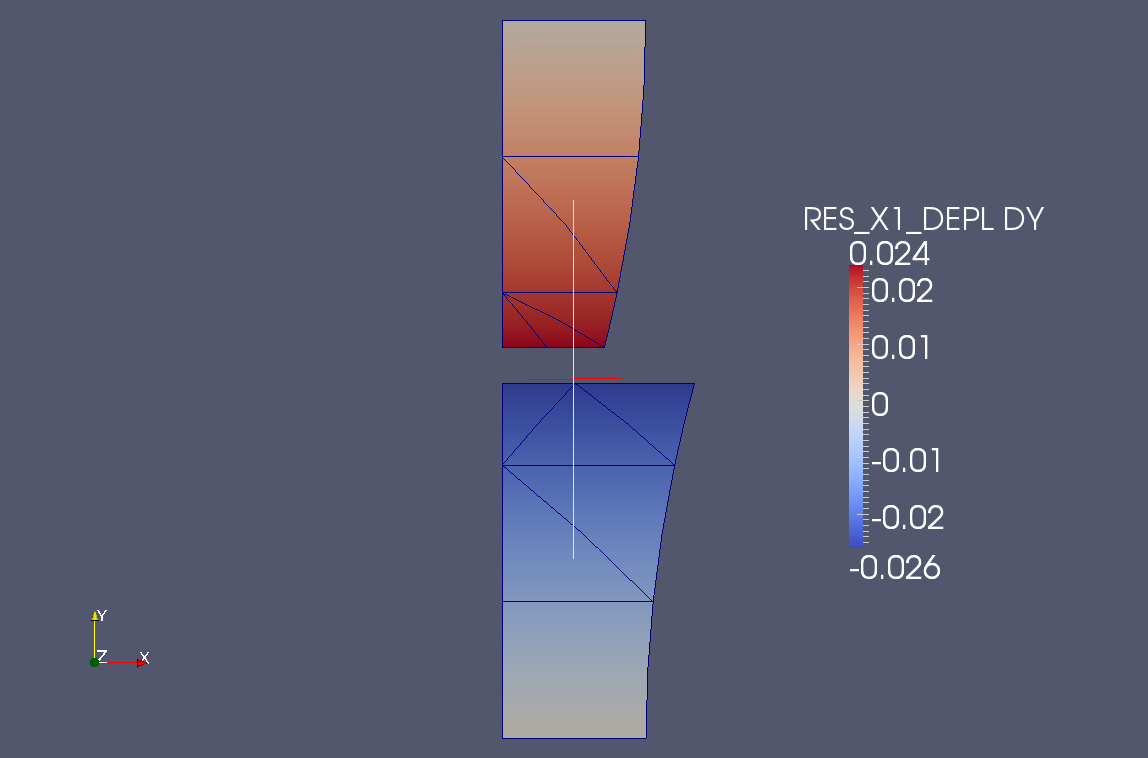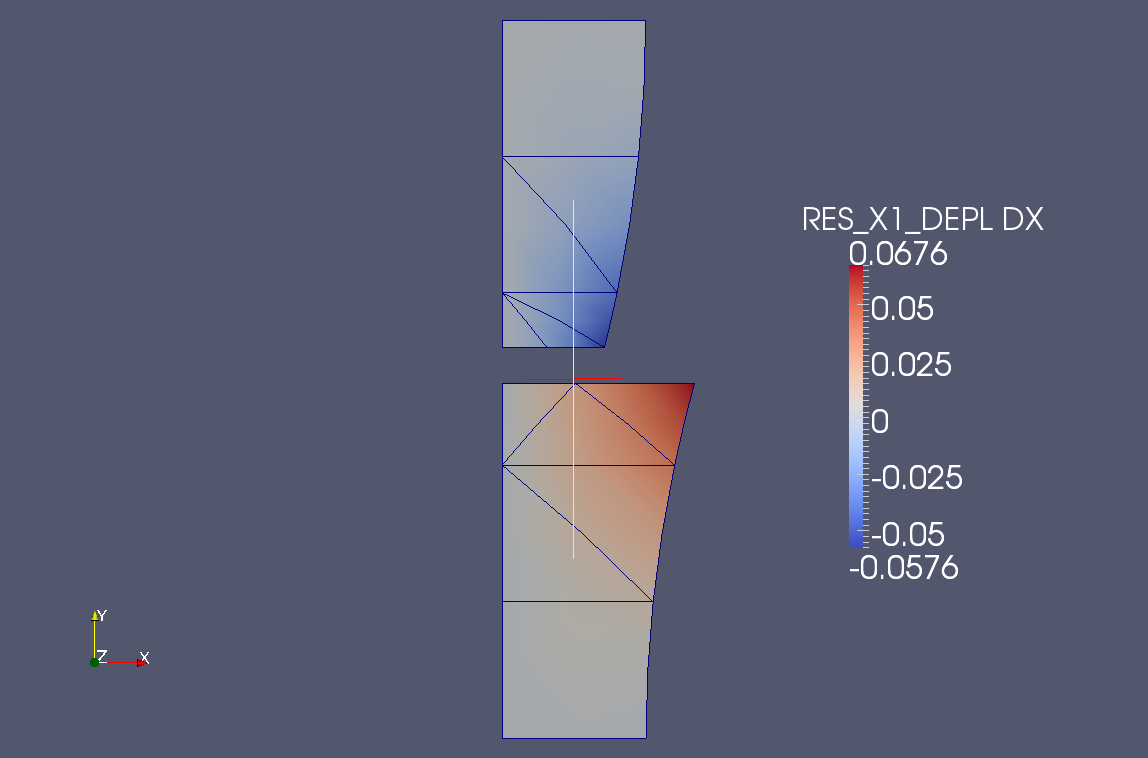4. B modeling#
4.1. Characteristics of modeling#
This is a D_ PLAN modeling using quadratic XFEM elements. The bar on which the modeling is performed is divided into 5 QUAD8. The interface is unmeshed and cuts off the center element in \(Y={L}_{d}=\frac{13\ast \mathit{LY}}{25}\). We have 3 XFEM elements and 2 classic elements.
4.2. Characteristics of the mesh#
The mesh is identical to that of modeling A, except that it is quadratic. It is composed of 5 QUAD8.
4.3. Tested sizes and results#
The results (resolution with STAT_NON_LINE) are summarized in the table below for the \(y\) direction. We test the following \(y\) movement of the interface nodes.
Quantities tested |
Reference type |
Reference value |
Tolerance (%) |
DY (below) MIN |
“ANALYTIQUE” |
-2.6E-02 |
0.001 |
DY (above) MAX |
“ANALYTIQUE” |
2.4E-02 |
0.001 |
We also test the displacement along \(x\) of the two interface nodes located on the [BC] side and respectively on the lower and upper lip of the crack.
Quantities tested |
Reference type |
Reference value |
Tolerance (%) |
DX (below [BC] side) |
“ANALYTIQUE” |
6.76E-02 |
0.001 |
DX (top side [BC]) |
“ANALYTIQUE” |
-5.76E-02 |
0.001 |
The displacement field is presented in the direction \(y\) (Figure) and \(x\) (Figure).
Figure 4.3-a : Field of movement by direction (Oy)

Figure 4.3-b : Field of movement according to direction (Ox)
